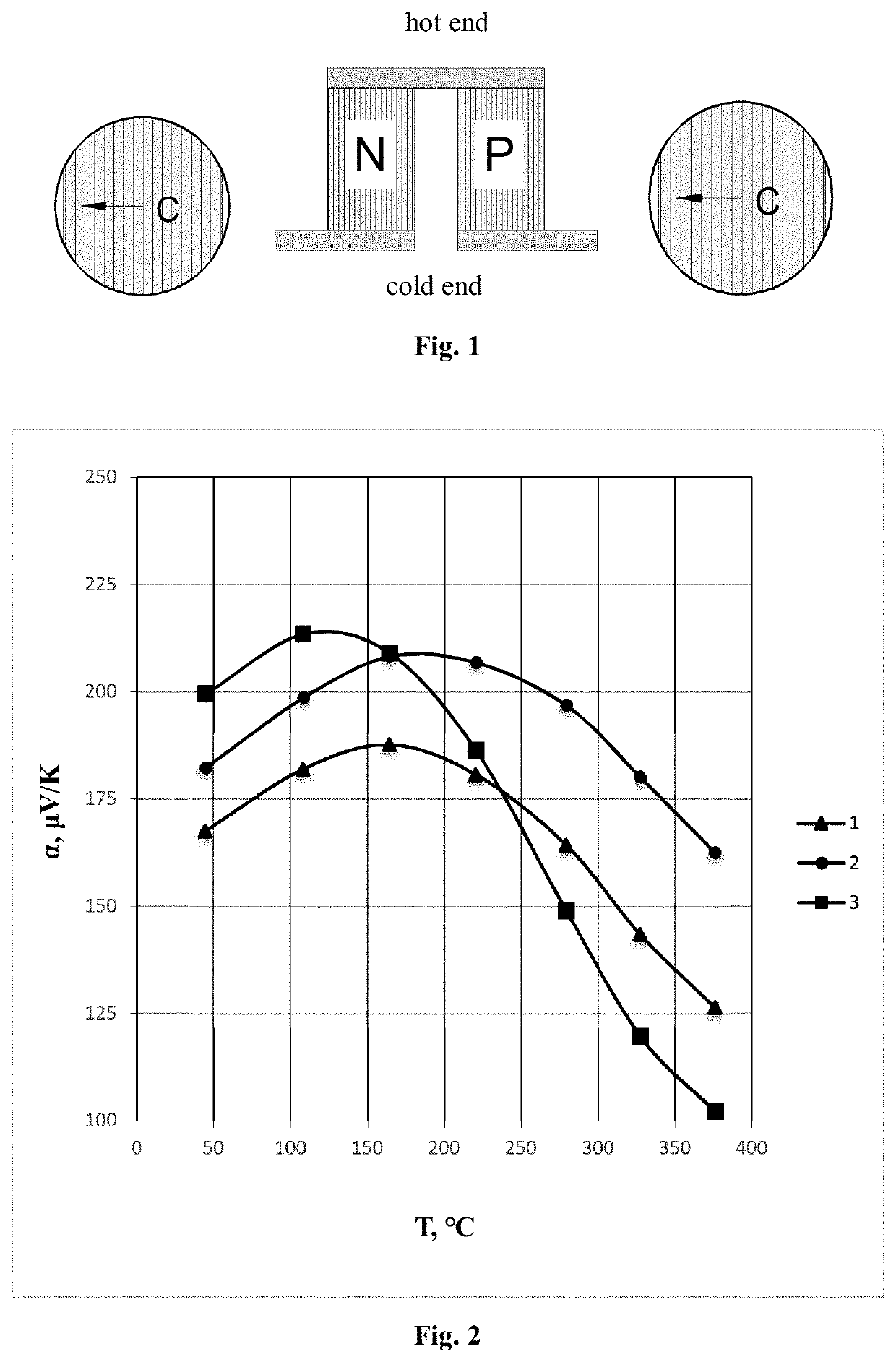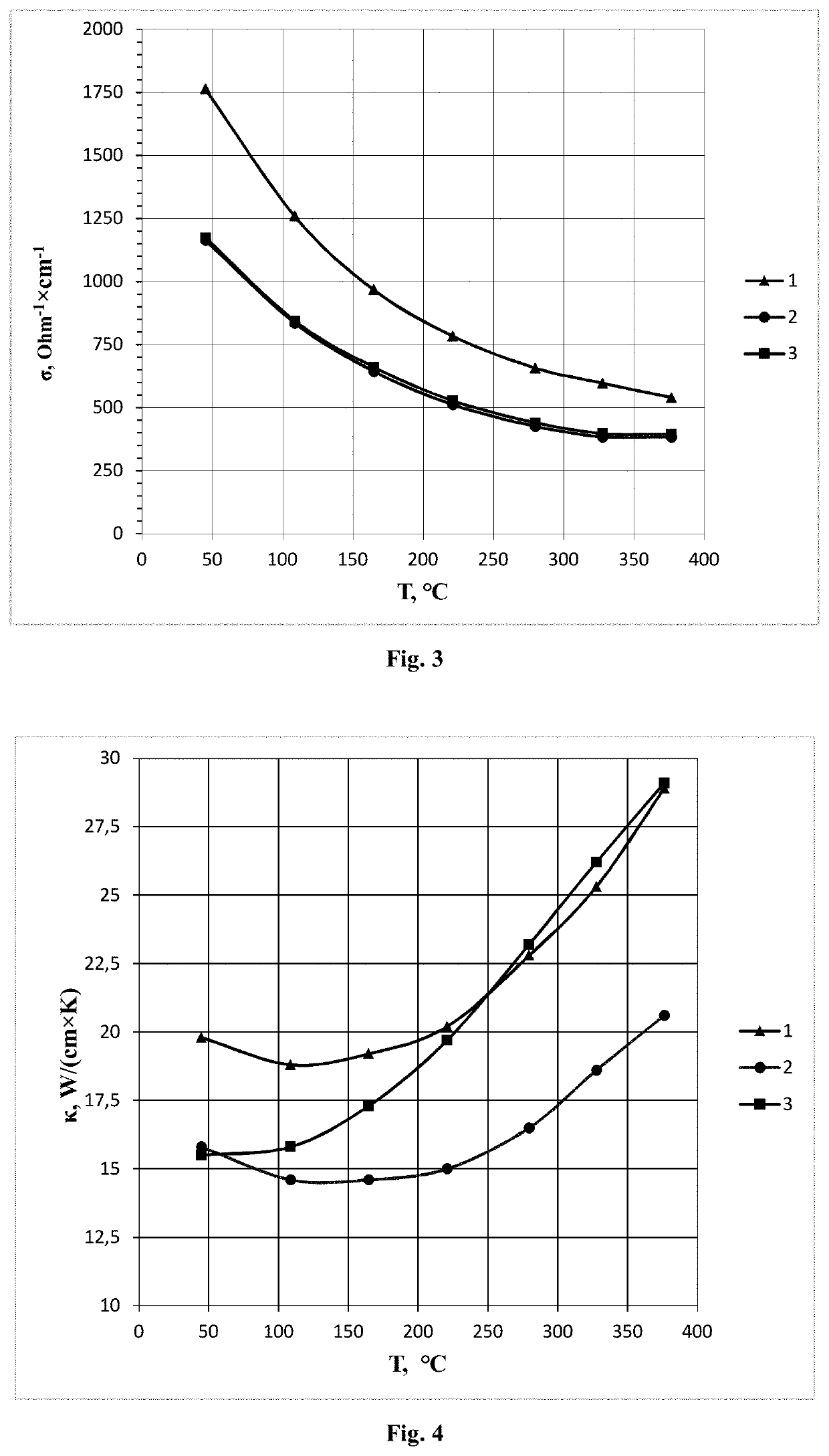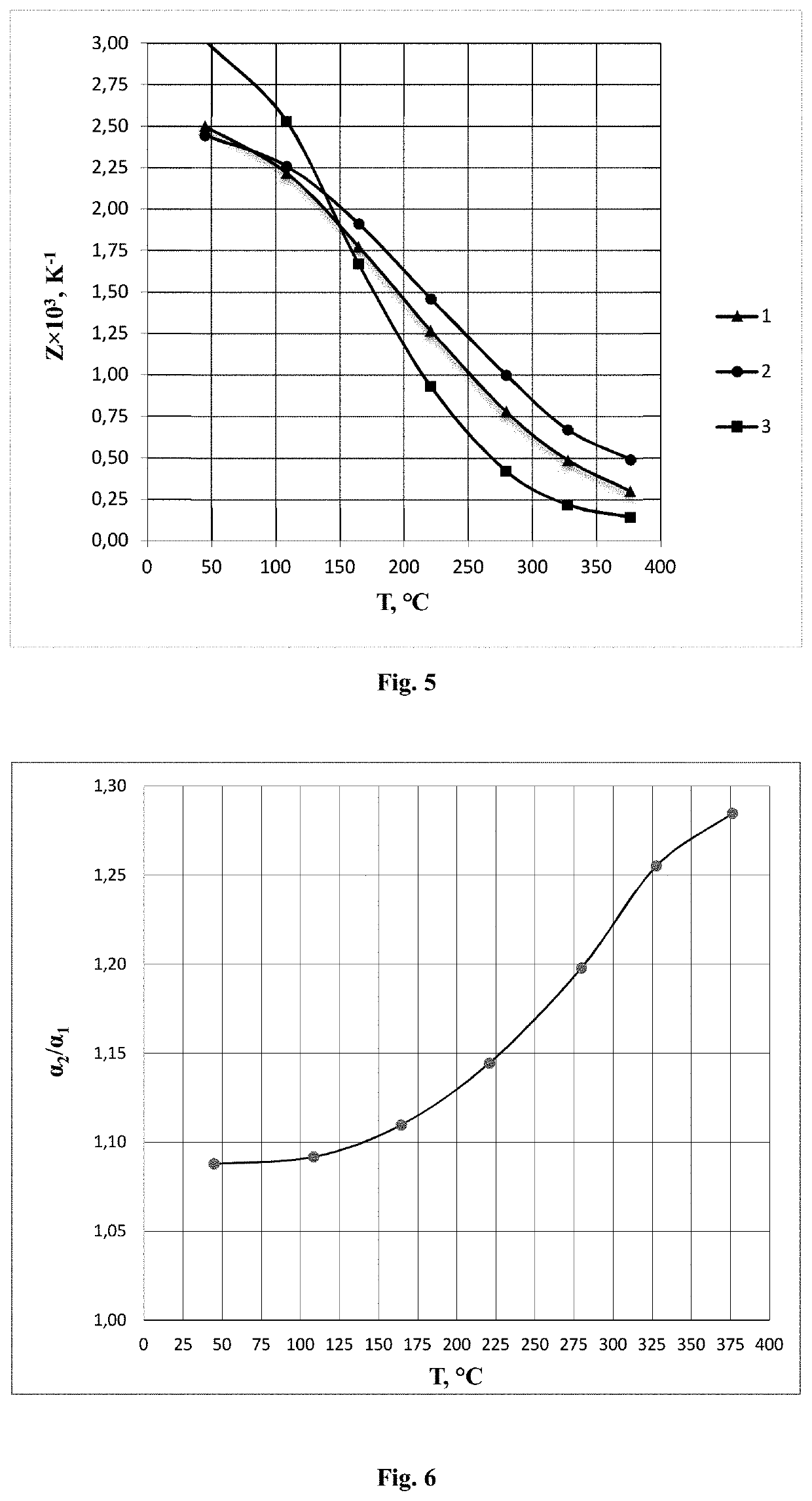Thermoelement (variants)
- Summary
- Abstract
- Description
- Claims
- Application Information
AI Technical Summary
Benefits of technology
Problems solved by technology
Method used
Image
Examples
first embodiment
[0012]Improved thermoelectric efficiency of the thermoelectric element is achieved due to decrease in “negative” effect of minority charge carriers on the value of Seebeck coefficient and, accordingly, Z parameter. This is because Seebeck coefficient becomes anisotropic at elevated temperatures due to intensive thermal generation of minority charge carriers. Therefore, Seebeck coefficient value of p-type leg diced out transverse C axis (standard orientation) becomes less than Seebeck coefficient value of p-type leg diced out parallel C axis. As the result, at higher operating temperatures, maximum Z parameter values are observed in p-type leg diced out parallel C axis.
[0013]Materials for practical use in thermoelectric generation applications are always of polycrystalline or composite nature.
[0014]The main manufacturing technique of serial bulk materials based on Bi2Te3 and related alloys is powder compaction by hot pressing combined with Spark Plasma Sintering (SPS) or hot extrusi...
second embodiment
[0024]Therefore, to enhance significantly thermoelectric efficiency of thermoelectric element, we propose in second embodiment to manufacture thermoelectric element in which p-type leg is built of two parts diced out with different directions of axes in relation to C axis (see FIG. 9). Bottom part of the leg at cold end (low-temperature part) is diced out and positioned in thermoelectric element so that heat flow in it is directed perpendicular to C axis. Top part of the leg at hot end (high-temperature part) is diced out and positioned in thermoelectric element so that heat flow in it is directed parallel to C axis.
PUM
 Login to View More
Login to View More Abstract
Description
Claims
Application Information
 Login to View More
Login to View More - R&D
- Intellectual Property
- Life Sciences
- Materials
- Tech Scout
- Unparalleled Data Quality
- Higher Quality Content
- 60% Fewer Hallucinations
Browse by: Latest US Patents, China's latest patents, Technical Efficacy Thesaurus, Application Domain, Technology Topic, Popular Technical Reports.
© 2025 PatSnap. All rights reserved.Legal|Privacy policy|Modern Slavery Act Transparency Statement|Sitemap|About US| Contact US: help@patsnap.com



